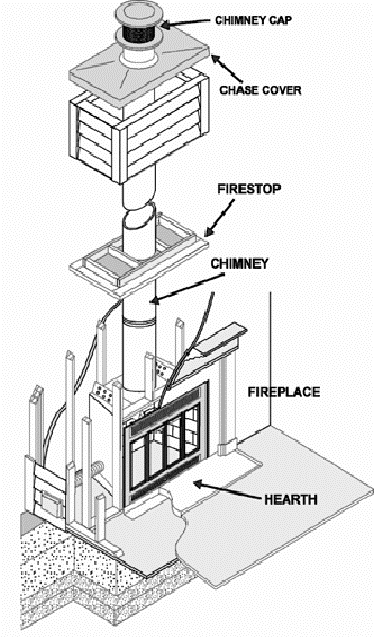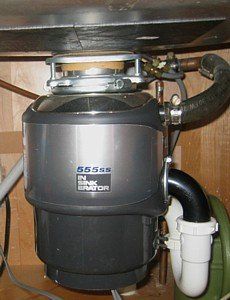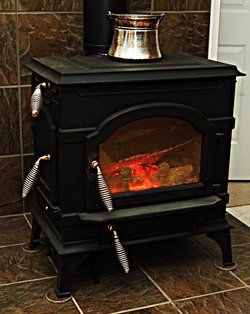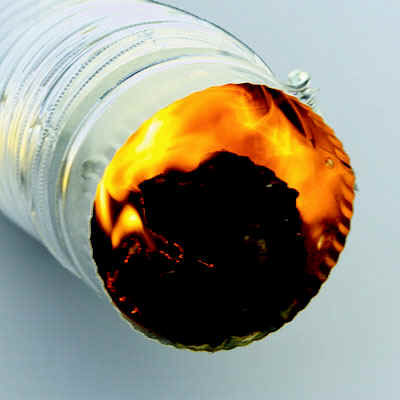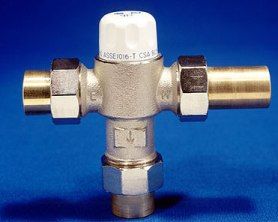By Beltway Home Inspections
•
November 1, 2016
by Nick Gromicko | Source: http://www.nachi.org/wood-burning-stoves.htm#ixzz2lnALrmPr A wood-burning stove (also known as a wood stove) is a heating appliance made from iron or steel that is capable of burning wood fuel. Unlike standard fireplaces, wood stoves are typically contained entirely within the living space, rather than inset in the wall. Wood stoves come in many different sizes, each suited for a different purpose: Small stoves are suitable in single rooms, seasonal cottages or small, energy efficient homes. These models can also be used for zone heating in large homes where supplemental heating is needed. Medium-size stoves are appropriate for heating small houses or mid-size homes that are intended to be energy-efficient and as inexpensive as possible to maintain. Large stoves are used in larger homes or older homes that leak air and are located in colder climate zones. To ensure safe and efficient use of wood-burning stoves, inspectors can pass along the following tips to their clients: Never: burn coal. Coal burns significantly hotter than wood, posing a fire hazard; burn materials that will emit toxic chemicals, such as wood that has been pressure-treated or painted, colored paper, gift wrap, plastic, plywood, particleboard, or questionable wood from furniture; burn wet wood. Generally speaking, it takes six months for cut, stored wood to dry out and be ready for use in wood-burning stoves; burn combustible liquids, such as kerosene, gasoline, alcohol or lighter fluid; let small children play near a lit wood-burning stove. Unlike standard fireplaces, the sides of which are mostly inaccessible, all sides of wood stoves are exposed and capable of burning flesh or clothing; or let the fire burn while the fire screen or door is open. Always: use a grate to hold the logs so that they remain secured in the stove and the air can circulate adequately to keep the fire burning hot; keep the damper open while the stove is lit; dispose of ashes outdoors in a water-filled, metal container; check smoke alarms to make sure they are working properly; and periodically remove the stovepipe between the stove and the chimney so that it can be inspected for creosote. Homeowners may want to hire a professional to perform this service. Efficiency and Air Pollutants While federal and state governments crack down on vehicle and industrial emissions, they do relatively little to limit the harmful air pollution emitted from wood stoves. The problem is so bad that, in many areas, such as Chico, Caifornia (pictured at right), the smoke from wood stoves is the largest single contributor to that city's air pollution. Smoke from wood stoves can cause a variety of health ailments, from asthma to cancer. To mitigate these concerns, the EPA sets requirements for wood-stove emissions based on the design of the stove: 4.1 grams of smoke per hour (g/h) for catalytic stoves, and 7.5 g/h for non-catalytic stoves. Some state laws further restrict airborne particulates, and many new models emit as little as 1 g/h. These two approaches -- catalytic and non-catalytic combustion -- are described briefly as follows: In catalytic stoves, the smoky exhaust passes through a coated, ceramic honeycomb that ignites particulates and smoke gasses. Catalysts degrade over time and must eventually be replaced, but they can last up to six seasons if the stove is used properly. Inadequate maintenance and the use of inappropriate fuel result in an early expiration of the catalyst. These stoves are typically more expensive than non-catalytic models, and they require more maintenance, although these challenges pay off through heightened efficiency. Non-catalytic stoves lack a catalyst but have three characteristics that assist complete, clean combustion: pre-heated combustion air introduced from above the fuel; firebox insulation; and a large baffle to create hotter, longer air flow in the firebox. The baffle will eventually need to be replaced as it deteriorates from combustion heat. The following indicators hint that the fire in a wood-burning stove suffers from oxygen deprivation and incomplete combustion, which will increase the emission of particulates into the air: It emits dark, smelly smoke. An efficient stove will produce little smoke. There is a smoky odor in the house. There is soot on the furniture. The stove is burning at less than 300º F. A flue pipe-mounted thermometer should read between 300º F and 400º F. The flames are dull and steady, rather than bright and lively. To ensure efficiency, practice the following techniques: Purchase a wood-burning stove listed by Underwriters Laboratories. Stoves tested by UL and other laboratories burn cleanly and efficiently. Burn only dry wood. Wood that has a moisture content (MC) of less than 20% burns hotter and cleaner than freshly cut wood, which may contain half of its weight in water. Burn hardwoods, such as oak, hickory and ash once the fire has started. Softwoods, such as pine, ignite quicker and are excellent fire starters. Make sure the stove is properly sized for the space. Stoves that are too large for their area burn inefficiently. Burn smaller wood rather than larger pieces. Smaller pieces of wood have a large surface area, which allows them to burn hotter and cleaner. In summary, wood-burning stoves, if properly designed and used appropriately for the space, are efficient, clean ways to heat a home.
